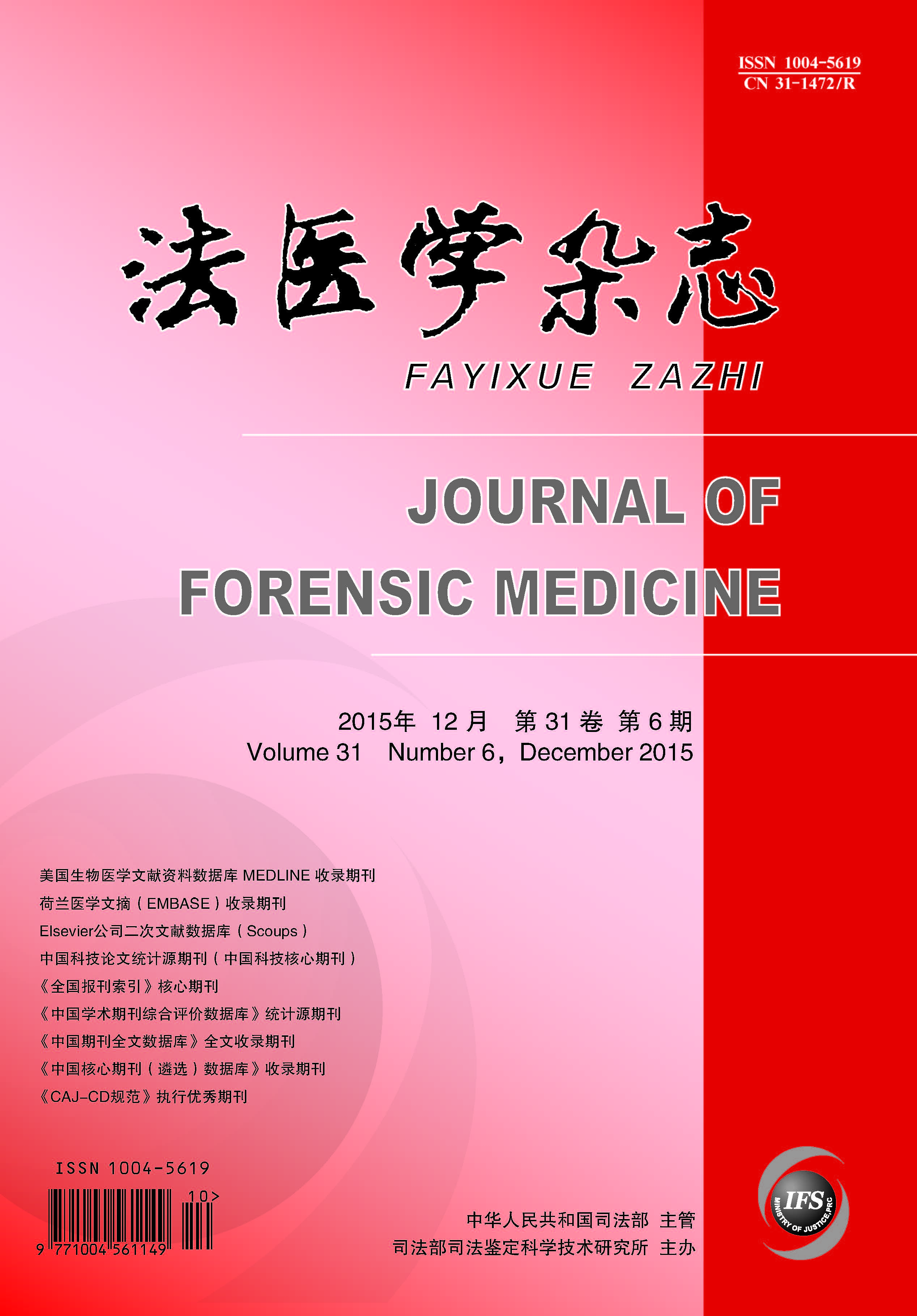|
|
Establishing a 29 Y-STR Loci Multiplex PCR System
WANG XIN-JIE, LUO LI-JING, HUANG LEI, ET AL.
2015, 31(6):
456-461.
DOI: 10.3969/j.issn.1004-5619.2015.06.011
Objective To establish a 29 Y-STR loci multiplex PCR system for investigating the genetic polymorphisms and to assess its application value in forensic science. Methods A multiplex PCR system was established using a five color fluorescence labeling 29 Y-STR loci (DYS456, DYS389Ⅰ, DYS437, DYS447, DYS389Ⅱ, DYS438, DYS522, DYS460, DYS458, DYS622, DYS390, DYS392, DYS448, DYS449, DYS391, Y-GATA-H4, DYS388, DYS19, DYS385a/b, DYS527a/b, DYS393, DYS459a/b, DYS635, DYS439, DYS570 and DYS627) for multiple amplification and capillary electrophoresis. And its applicability was validated with genetic polymorphism data of 29 Y-STR of unrelated 2 000 male samples in Shandong Han population. Results A total of 1 981 different haplotypes of 2 000 individuals showed genotype diversity between 0.370 0 and 0.965 4. The system provided stable and accurate typing with high sensitivity of 0.05 ng. It satisfied the needs of variety of routine biological samples. Conclusion The 29 Y-STR loci multiplex PCR system could be applied for actual cases and establishment of Y-STR database. In addition, it has great significance in forensic science practices and related research.
Related Articles |
Metrics
|


